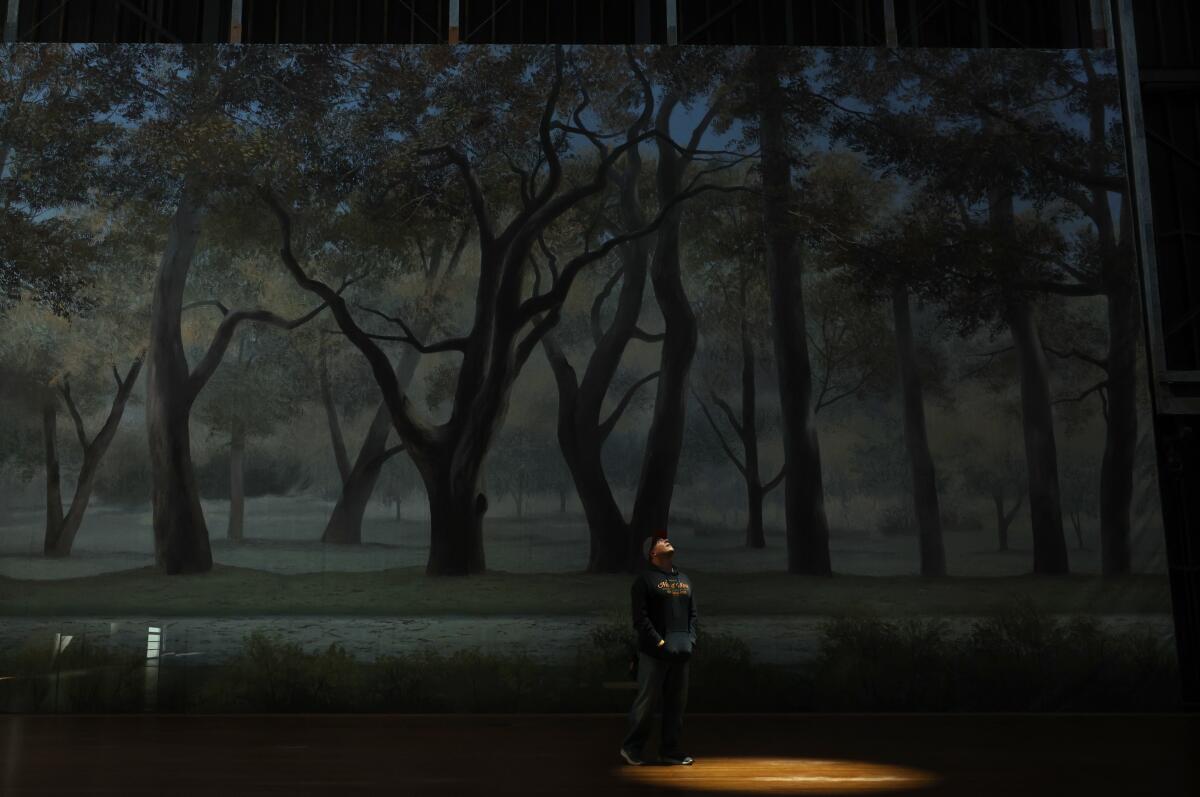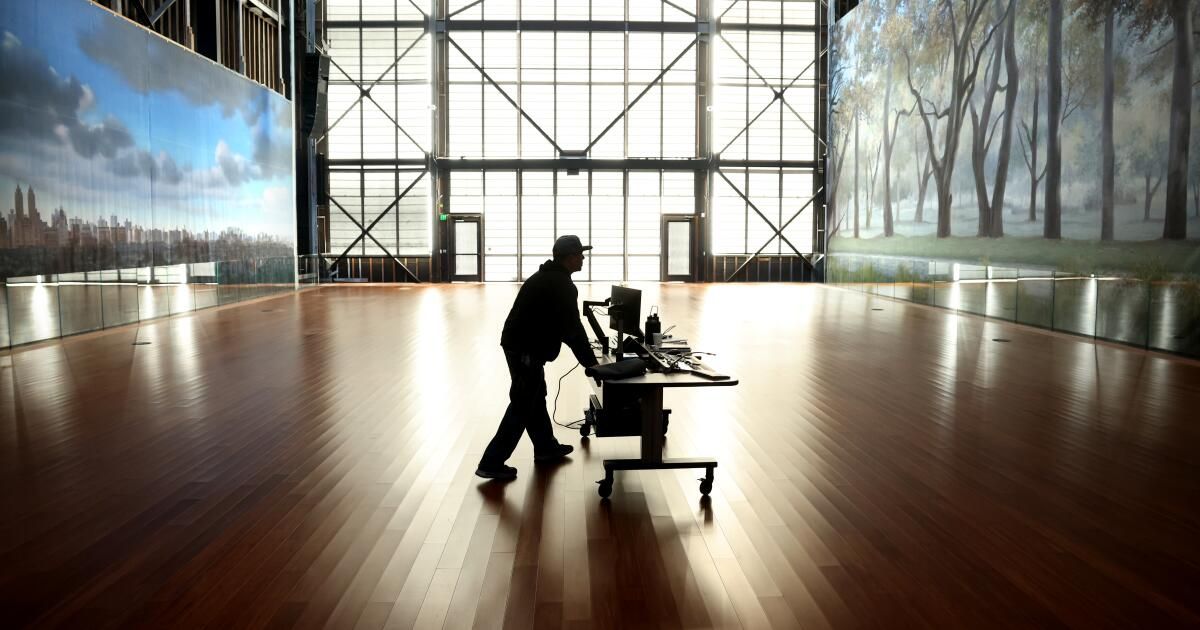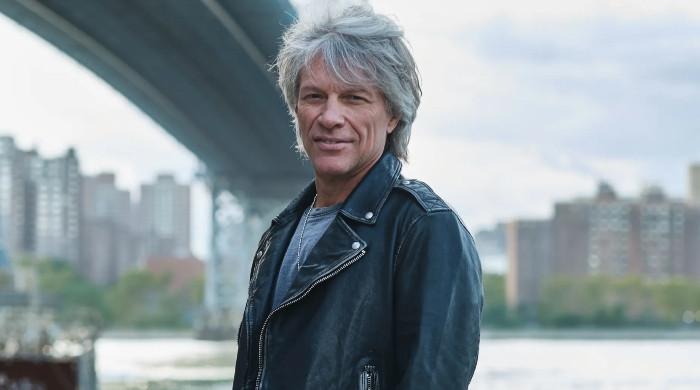What would “The Sound of Music” be without the vast, snow-capped Swiss Alps? “The Wizard of Oz” without its winding yellow brick road in the distance? Or “North by Northwest” without the stony faces of Mount Rushmore?
Beginning in 1938, the artists creating such historic backdrops for Metro-Goldwyn-Mayer were able to trade the scaffolding for their own dedicated workshop space on the studio lot in Culver City, complete with specially designed pulleys for raising and lowering tall canvases, high ceilings, large windows that provide light and ventilation facing north to dry the finished backgrounds and filter paint odors.
Despite its utilitarian exterior, the Performing Arts building (overseen by artist George Gibson in its heyday) became the birthplace of a colorful history of backdrops, including those created for “Hook,” “Jerry Maguire ”, “My Best Friend's Wedding”, “ The Holiday”, “Independence Day”, “Stuart Little”, “Spider-Man 2”, “Little Women” and “Poltergeist”, as well as the hit game shows “Jeopardy! ” and “Wheel of Fortune.”
The renovated Performing Arts building at Sony Pictures Studios includes production offices, a multi-use event space and construction materials for film and television sets.
(Wally Skalij / Los Angeles Times)
The building, on what is now the Sony Pictures Entertainment lot, had been vacant since 2017, when former tenant and rental company JC Backings moved out. But later this month, the space will have a renewed purpose as visitors will be able to tour or rent a revitalized version of the space for parties and programming, thanks to a major renovation project that has added nearly 74,000 square feet of office space and production to the Culver City Lot.
Teresa Grimes, a historic preservationist who worked with Sony on the renovation project, suspects that the Performing Arts building was overlooked as a historic building in part because of its plain exterior.

Lighting technician Greg Nadal in front of a backdrop of Eli Roth's “The House with a Clock in Its Walls.”
(Wally Skalij / Los Angeles Times)
“It just looks like a utilitarian industrial building; It reminds me a little of the Bradbury Building,” a landmark in downtown Los Angeles that has served as a famous filming location, “because you would never know until you walk through the front doors that it is the interior that makes that building special.” and unique,” Grimes said. “The same thing happens here.”
The restored workshop-turned-event space now accounts for just 7,500 square feet of the total building. It comes equipped with a modern catering kitchen, a theatrical lighting system and audio-visual equipment. The space will open to employees and visitors with the painted New York skyline from Ridley Scott's “Someone to Watch Over Me” and the forest landscape from Eli Roth's “The House with a Clock in Its Walls,” backdrops that give a wink to the history of the building and offer an immersive experience for guests.

A video crew works alongside a backdrop that appeared in Ridley Scott's “Someone to Watch Over Me” inside the restored Performing Arts building at Sony Pictures Studios.
(Wally Skalij / Los Angeles Times)
The two backdrops are not expected to remain there forever, as Sony or other outside parties using the space for events will be able to change the stage if necessary to match the theme of their events. (The most famous funds can be difficult to obtain, since many of them have been donated to museums and universities.)
As for usable office and production space, these were added as a multi-story addition to the original Performing Arts building to preserve the original construction of the workshop space.
The expansion includes about 32,000 square feet of production offices; a 4,310-square-foot locker room, complete with laundry; a nearly 8,000-square-foot consumables department; 18,000 square feet of storage; and an approximately 3,200-square-foot visitor space with a studio merchandise store.
While the addition is modernized with solar panels and sleek interiors, the exterior still pays homage to the original scenic backdrop, complete with a bridge connecting old and new.
“Architecturally, it's completely unique,” Grimes said. “I don't think there will be another building like this because it was built and designed specifically for a single purpose.”












